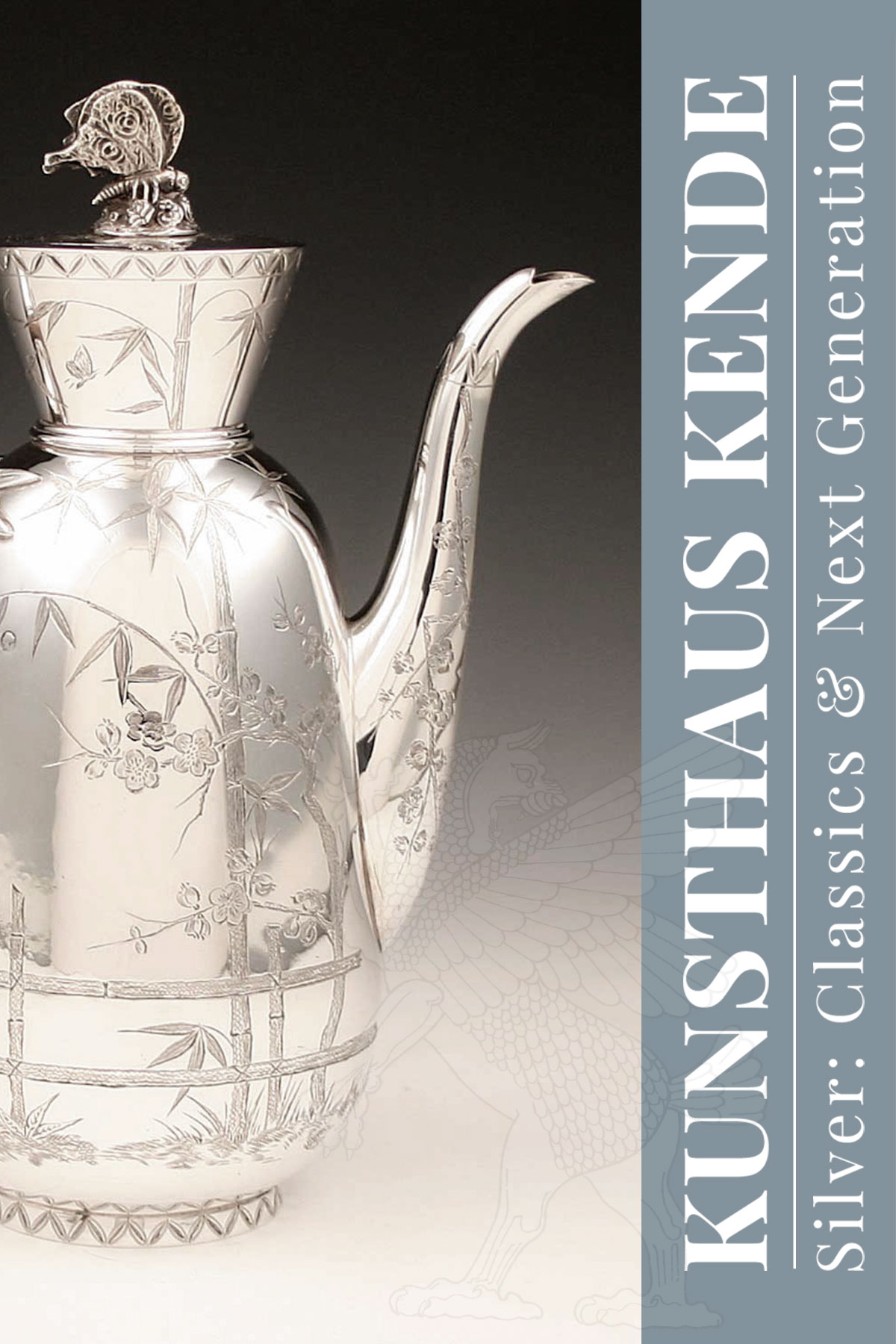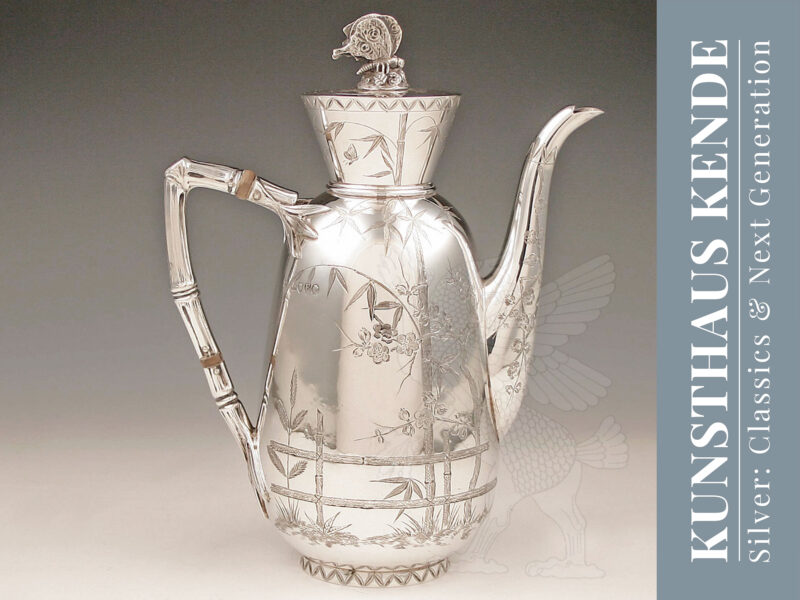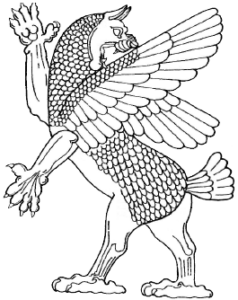Item number: 58006
An outstanding sterling silver Aesthetic Movement coffee pot
London 1880 by John Aldwinckle and James Slater
The round body standing on a smooth base and showing a subtly engraved wooden fence with flowers and trees. The even lid engraved with the branches of a cherry tree which extend to the rim and the hinge. The cast knob is made as a butterfly lying on flowers. The solid sterling silver handle made in the shape of a bamboo branch and fixed through two heat stoppers to the body by sockets of cast bamboo leaves. The spout engraved with the branch of a cherry tree and foliage. Both the subtle martelé visible to the inner side as well as the very fine engraving to the body illustrate that the teapot has been made in pure handwork. The flat hinge is a further sign of real quality.
An overview of our other Art Nouveau and Arts & Crafts silverware can be found here.
Exceptional sterling silver coffee pot of the early Arts & Crafts style which skilfully combines the stylistic tendencies of the Aesthetic Movement with those of the Arts & Crafts style.
From the second half of the 19th century onwards, individual secessionist groups of artists formed in Great Britain whose work led to the Arts & Crafts style. These groups were united by the desire to overcome the opulent Victorian style and to give artistic craftsmanship a new importance. At the same time, Tiffany was successful in the United States with silver cutlery and silverware in the Japanese style, which were initially imported from Japan and were soon produced by their silversmiths as well as in silver and so-called mixed metal (silver combined with bronze or brass). In the following years, a great enthusiasm for silverware in the Japanese style arose and led to a movement that entered art history in the Anglophone countries on both sides of the Atlantic as the Aesthetic Movement.
In addition to the exotic style of Japanese art, the artists were particularly fascinated by the unconventional way of depicting images at that time, such as cropped or transverse pictorial elements, elements that also found their reflection in Impressionist painting.
19.4 cm / 7.63″ length, 11.0 cm / 4.33″ diameter, 25.0 cm / 9.84″ height (including knob); 758.5 g / 24.38 oz





